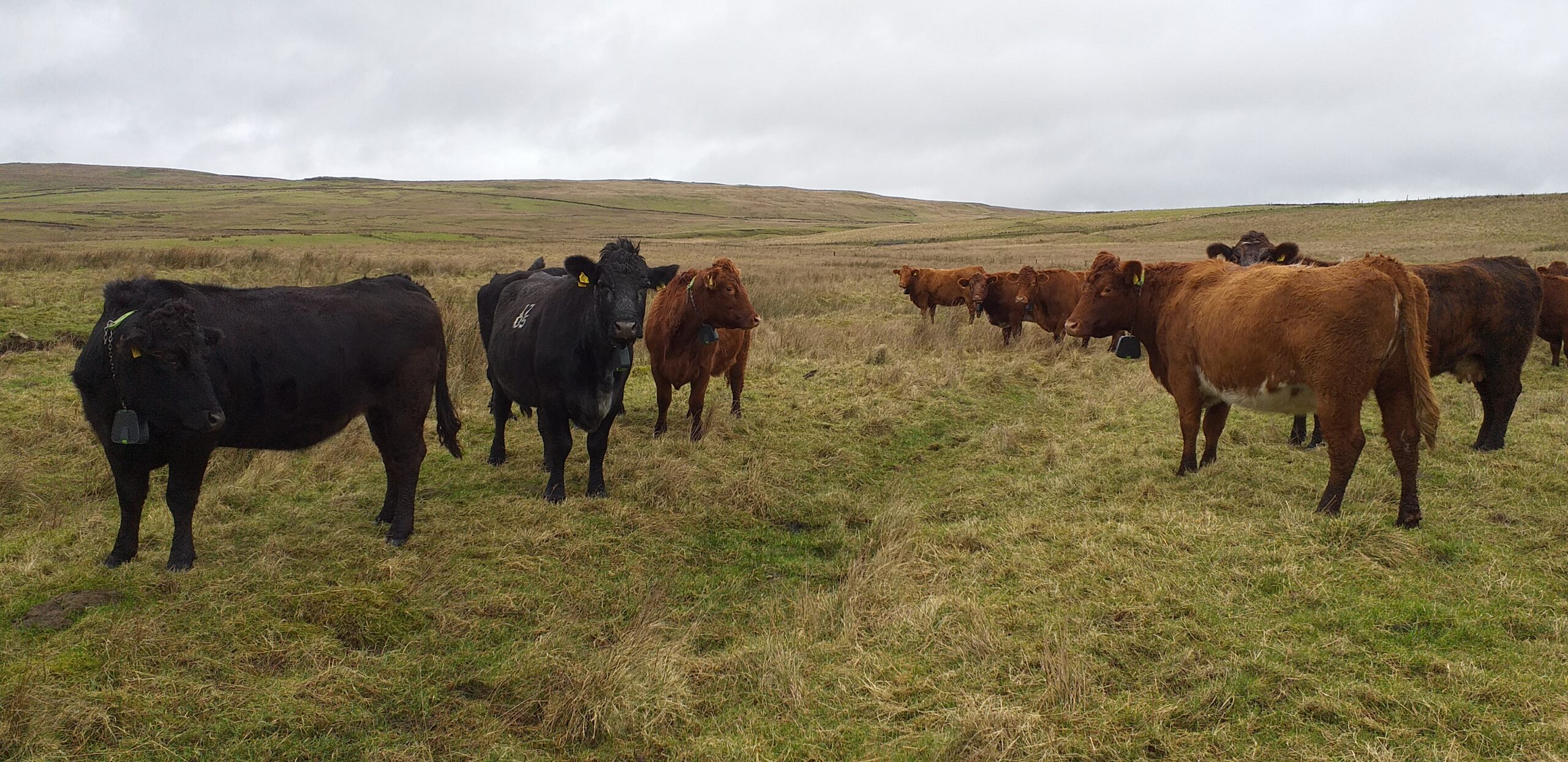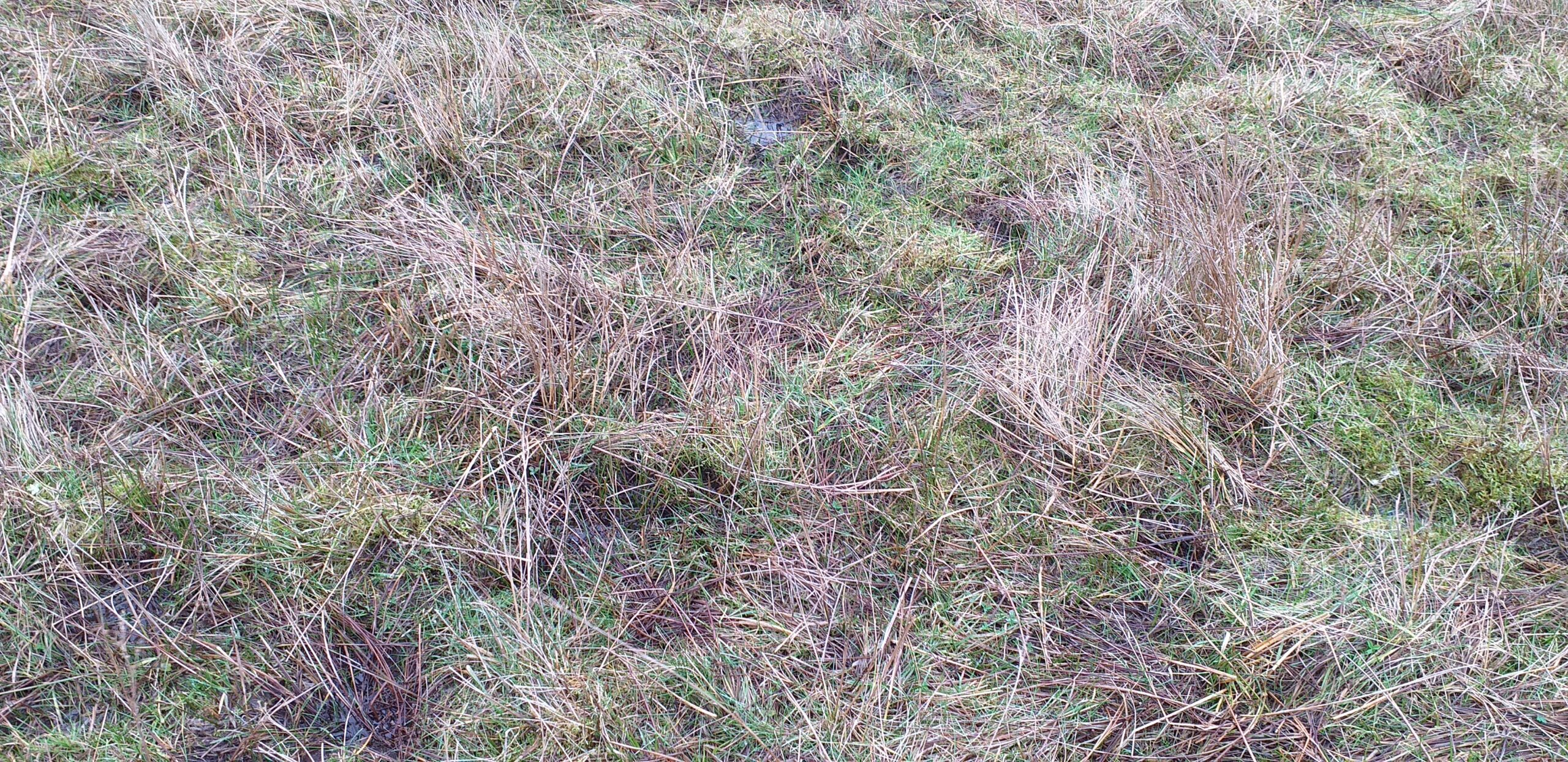Out-wintering as a conservation grazing tool
Upland suckler cows are often housed for 6 – 7 months. As non-selective grazers who will mobilise the fat off their backs for milk or maintenance, this stock group is of particular use for foraging over rougher ground in winter. This can return upland semi-natural grasslands to optimum condition for the following season. This has to be done extensively to eliminate the need for any supplementary feeding sites which would damage habitat.
From November 2021 a group of 19 spring calving suckler cows were out wintered over 60 hectares of the breeding wader pasture at CAFRE Hill Farm. The cows were selected on the basis of the fattest with the largest calves. They were selected at housing and weaned a month earlier with the rest of the herd retaining their calves in the house.
Whilst this project was focussed on habitat management it was also aware of the positive benefits to the livestock in terms of condition, muscle tone and natural environment.
From a condition score of between 3.5 – 4+ in mid-November, the cows gradually lost condition so that by mid-January, 5 had reached the ideal condition score of 2- 2.5 for calving and were housed. 14 cows remained at pasture until late February when another 2 were housed. The remaining 12 stayed out until mid-March after which they were housed for ease of management. The cows developed as expected a heavy winter coat and were relaxed and fit. Activity monitors recorded their behaviour. All cows maintained close to the herd average activity and displayed a normal cycle of 3 extended foraging and 3 rumination periods/24 hours.
Problem identified that the technology will address
Upland semi-natural grassland vegetation growth is slow to start, with peak growth occurring in June – August. It is inappropriate to heavily graze due to ground nesting bird activity between April – end of June. Bulling cows for spring calving occurs during July – Sept and on wet heavy land producers are fearful of injury to the bull, with the result that semi-natural grasslands are often not grazed well by non-selective graziers during the peak growing season. Excess tall & poor quality vegetation is not grazed well by selective graziers (sheep) and excess vegetation is then wasted and often requires removal in late winter so that pastures are returned to ideally bare condition to suit breeding waders and a diverse flora.
Ideal pasture conditions for breeding waders in Spring
Grazed out wader fields were achieved to leave a short mixed sward with tussocks, sprit & soft rush remnants for light cover, some hoof marks and dung for invertebrate feeding opportunities. Wader chicks have to feed themselves from day one on invertebrates so a sward with short grass to allow chick movement and feeding with cover for the wader nesting & rearing period is ideal. Previously fields were flailed in patches/strips in January or February but extra cow grazing should leave a more heterogenous sward.
Breeding wader success
The 70ha unit has increased snipe pairs from 1 in 2009 to over 15 in 2021 with improved pasture management, the provision of scrapes and a predator control programme.
Additional benefits of out-wintering cows.
In addition to the health benefits to the livestock, silage requirements were cut by approximately 100 tons and an associated ammonia emissions reduction of @20% was achieved for the suckler herd between the batch described and a further group of 10 out-wintered in a separate project.


